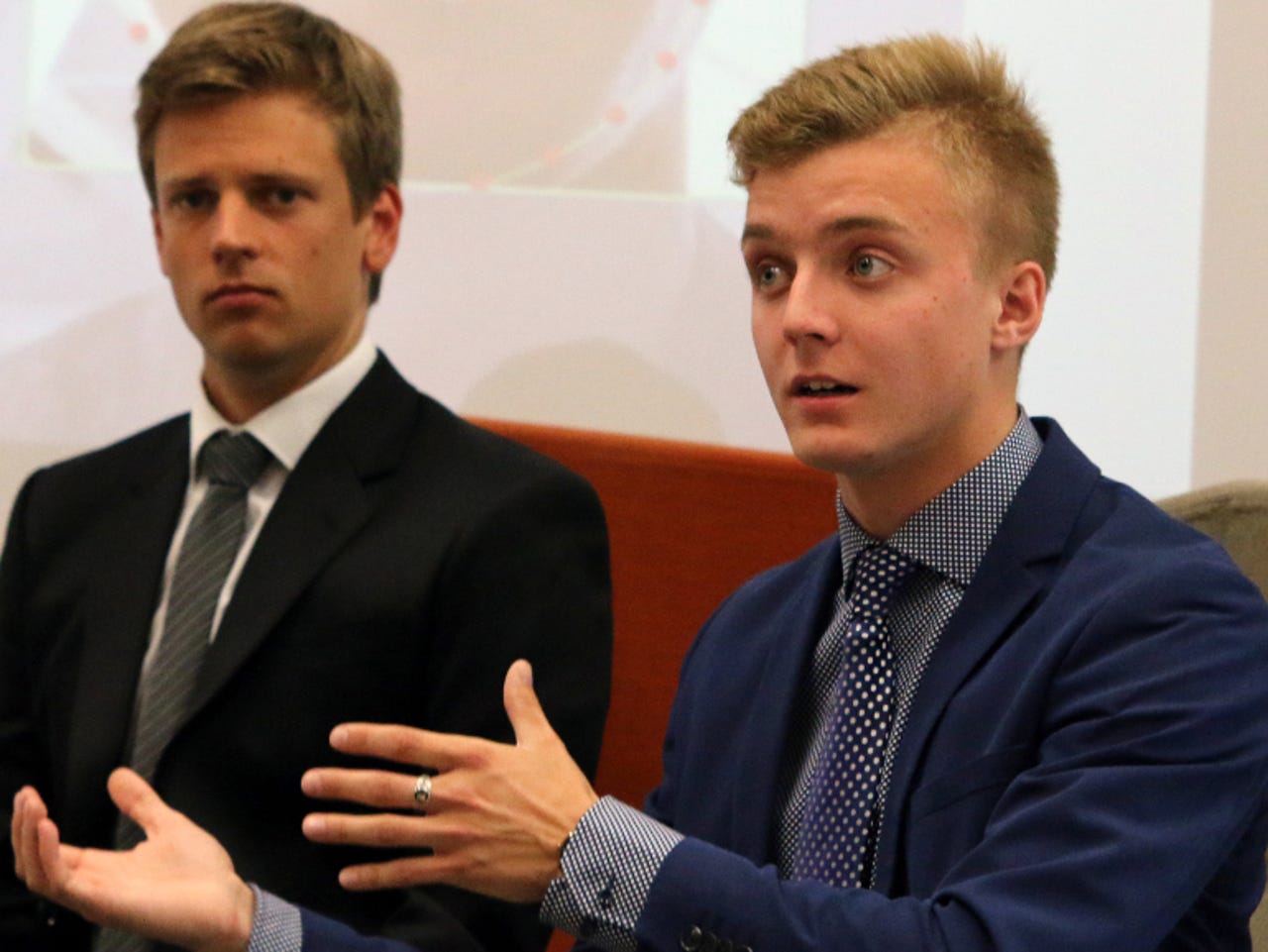An end to ID theft? This facial recognition is so smart even twins can't fool it


With, left, Estonian e-residency project head Kaspar Korjus, Veriff CEO Kaarel Kotkas: "There are some differences that a human eye could miss, but the algorithm won't."
In the spring last year, Kaarel Kotkas was finishing his high-school studies at the Tallinn Secondary School of Science. Around that time he was approached by billion-dollar startup TransferWise, which has its development hub in Estonia.
"We've heard great things about you. Could we meet up and discuss a few opportunities for cooperation?" were the words from the fintech firm that helped launch his career.
See also
It was not a big surprise that Kotkas had caught the eye of TransferWise, because he had already spent a few years testing various web and verification systems. But until that point, he had viewed it more as a hobby.
In 2014 he also launched a student company with his friends, which was aiming to help students find short-term jobs to gain work experience. It was named the most-promising student company in Estonia in a competition that same year.
While at TransferWise, Kotkas helped test its software for a few months. When his temporary stint at the company ended, he started to look for new challenges in the same field.
"At TransferWise, I really came to understand the importance of identity verification. How important it is to know who exactly made a specific transaction and how exactly the money is moved," he tells ZDNet.
Kotkas had some specific ideas for developing a new complex verification system, which he pitched to a few investors. In no time, he managed to persuade two major names in the local startup scene, Intel Ventures' backed Fortumo's co-founder Rain Rannu, and the same company's board member Linnar Viik, to back it.
Another investor was a new local bank called Inbank, which was also the first bank to test the new verification services. The company was then set up and named Veriff, which is a portmanteau of the words 'verify' and 'sheriff'.
Veriff's verification process involves several steps. First, using the webcam of a computer or the camera of a smartphone, the person has to take several photos of his or her passport or ID card with flash and without, and then of himself or herself.
"Then we run special algorithms that compare the photo on the ID and the photo taken by the person of himself or herself," explains Kotkas, adding that the technology is looking at around 120 different points on a person's face and comparing thousands of ratios between them.
"Our algorithms are so accurate that we can even make clear distinctions between twins. There are some differences that a human eye could miss, but the algorithm won't," he says.
What happens after the comparison of the photos depends on the local laws and regulations. For example, in Estonia, a specially-trained Veriff employee conducts a short video interview with the individual who wants to open a bank account or start a business relationship at a distance.
Security
This interview is a requirement of Estonia's FinTech regulations. But, according to Kotkas, these video interviews will in future also be used even in those countries that don't stipulate it in their laws or regulations, if there are any doubts about the individual's identity.
In Estonia, among other smart methods, Veriff also automatically uses the personal information provided in the passport or ID card to compare it with data in Estonia's population register to make sure the person really exists.
Veriff's service was launched in June after Estonia passed a new law that legalized technical systems for identity verification in the financial services field. According to Kotkas, it took a year of tests, audits, and meetings with the ministry of finance, ministry of interior and the Estonian data protection inspectorate (EDPI) to get the access to the national registers.
To detect any misuse of the registries, every data request is saved and can be viewed at any time in Estonia's state portal by the person who is the target of a specific enquiry.
"Also EDPI and ministry of interior are constantly supervising our actions," Kotkas says, adding that Veriff has already secured more or less similar access to the registries of three other undisclosed European countries, where the company wants to broaden its operations in the near future.
"We need the access to registries to assure the maximum level of security," he says, because visual identification might not always be enough. "We're in the situation where we need to constantly improve our service, putting a lot of focus on biometrics."
In Estonia, in addition to Veriff's initial investor Inbank and a few other local companies, Kotkas has already managed to attract business from Uber's Estonian branch. In coming months the ride-sharing company will start using the startup's service in Estonia to verify its drivers.
"If it's a success, then we already have a few other countries where we could expand our cooperation," Kotkas says.
"The sharing economy is very important for us, because security is the key factor for businesses operating in this field. The sharing economy is our future. It will make many things a lot more effective in our lives, and our role is to make it even more secure and reliable for everybody."
A second major sector where Kotkas sees a big growth for Veriff is tourism.
"Our solution could make the queues for the check-in in hotel lobbies disappear. When you've passed the verification process with your smartphone, it could display a QR code, which you use in the hotel to get your keycard. Or you could use NFC to open locks after the verification process with your Android smartphone. We're already testing these kinds of solutions in some hotels," he says.
Veriff's office is situated in Estonia, where it currently employs 12 people, most of them Estonians, but a few specialists also from countries like Germany, Mexico and Georgia. In the near future, the company is aiming to expand to a few European countries and next year to certain markets outside Europe.
Read more from Estonia
- What's suddenly luring Brexit-hit Britons? Estonia's digital citizenship for anyone
- Why ripples from this Estonian blockchain experiment may be felt around the world
- Skype roots, open-source encryption: How startup Wire is spreading the word on secure comms
- Tiny Estonia: Our part in Twilio and the biggest US tech IPO this year